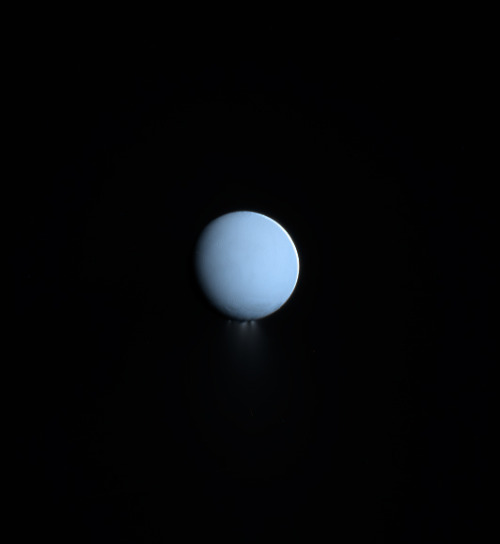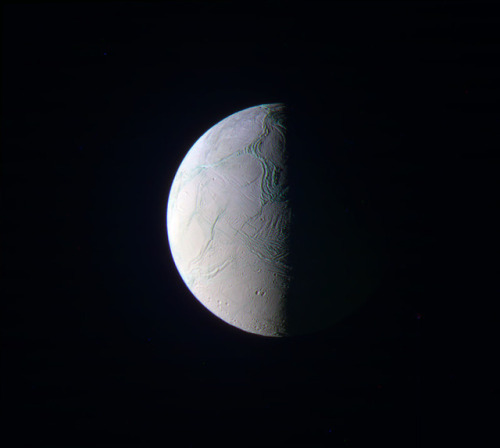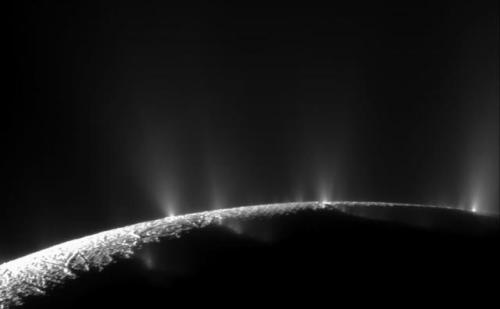Insight System - Sixth Planet (Insight A-VI)






Pictures of the day - December 22, 2018
Insight System - Sixth Planet (Insight A-VI)
Insight A-Vi is an Earth-like water-world with a surface completely covered in oceans. The planet has a mass of 0.65 Earths and a diameter 0.97 times that of our planet. An extensive ring system surrounds the planet and the oceans contain simple signed-celled life.
The planet orbits at an average distance of 1.10 AU and a day on the surface lasts 18 hours and 31 minutes. Compared to the inner-worlds, Insight A-VI is rather cold with an average global temperature of 41 F. Still the oceans absorb enough heat that there are no ice caps at the poles, since ocean currents keep the water from freezing.
Note the inner two planets have comet like appearance from their atmospheres being strip away by the sun.
High Resolution Pictures
Insight A-VI
Three small moons
Rings
The sun and inner planets
Sunset
Planet rise
More Posts from Sharkspaceengine and Others

Picture of the day 2 - November 20, 2018
Messier 59. - The next galaxy I have selected to explore in space engine. M59 is an elliptical galaxy location about 54 million light years from the Milky Way.


Pictures of the day - January 16, 2019
Comets

Picture of the day - January 3, 2019
Desert-like moon orbiting a large gas giant. This is the same world as the skylines from the previous post.
Crowded Worlds

Picture of the Day - October 15, 2018
Alien moon and its parent gas giant, looking towards the sun. This system is located within one of the densely packed globular clusters orbiting Triangulum’s center.
Cold Green World

Picture of the day 2 - November 10, 2018
A cold ice-giant and one it’s moons passing in front of the disk of the Milky Way.





Triangulum Log - Post 2 - The Outskirts
More pics of the system. Notice the lack of stars in the background. The system being a runaway star, is quickly escaping the galaxy. The nearest stars are more than 1,000 light years away. Interesting enough in this system, while the major planets orbit the system’s common center of mass, a dense asteroid belt and 3 dwarf planets directly orbit the system’s black hole. The dwarf planets and asteroids likely formed out of some of the remaining debris from the supernova that created the black hole.
The last two pics are a massive red moon orbiting the systems 7th planet. The moon has a very Mars-like feel to it.






Pictures of the day - November 26, 2018
A system of 6 planet’s orbiting a rare dim carbon star that has swelled into a red giant. All of the planet’s have been roasted by the star. The star has a very low surface temperature; therefore, all of the planets have a red-tint due to the lack of blue colored light.
The outer-most planets form a double planet system which consist of a Mars-like world orbited by an ocean world. The ocean world once being a frozen ice-covered world melted the by expanded sun.
Space Engine System ID: RS 5581-42-4-1201-1122
High Resolution Pictures:
Inner-most world
Massive giant covering the sky
Roasted Ice-giant and its moons
Another burnt world
Outer-most Double Planets
Hurricane









Enceladus
Enceladus is one of the major inner moons of Saturn along with Dione, Tethys, and Mimas. It orbits Saturn at a distance of 148,000 miles (238,000 km), falling between the orbits of Mimas and Tethys. It is tidally locked with Saturn, keeping the same face toward the planet. It completes one orbit every 32.9 hours within the densest part of Saturn’s E Ring, the outermost of its major rings, and is its main source.
Enceladus is, like many moons in the extensive systems of the giant planets, trapped in an orbital resonance. Its resonance with Dione excites its orbital eccentricity, which is damped by tidal forces, tidally heating its interior, and possibly driving the geological activity.
Enceladus is Saturn’s sixth largest moon, only 157 miles (252 km) in mean radius, but it’s one of the most scientifically compelling bodies in our solar system. Hydrothermal vents spew water vapor and ice particles from an underground ocean beneath the icy crust of Enceladus. This plume of material includes organic compounds, volatile gases, carbon dioxide, carbon monoxide, salts and silica.
With its global ocean, unique chemistry and internal heat, Enceladus has become a promising lead in our search for worlds where life could exist.

In 2005, Cassini’s multiple instruments discovered that this icy outpost is gushing water vapor geysers out to a distance of three times the radius of Enceladus. The icy water particles are roughly one ten-thousandth of an inch, or about the width of a human hair. The particles and gas escape the surface at jet speed at approximately 800 miles per hour (400 meters per second). The eruptions appear to be continuous, refreshing the surface and generating an enormous halo of fine ice dust around Enceladus, which supplies material to one of Saturn’s rings, the E-ring.
Several gases, including water vapor, carbon dioxide, methane, perhaps a little ammonia and either carbon monoxide or nitrogen gas make up the gaseous envelope of the plume.
Read more at: solarsystem.nasa.gov
Image credit: NASA/JPL/Cassini & Kevin Gill
Blue Titan

Picture of the day - October 12, 2018.
Blue-tinted Titan-Like world with liquid methane oceans and an extensive ring system.
-
 evenglitterfadestodust liked this · 6 years ago
evenglitterfadestodust liked this · 6 years ago -
 brushesnbunnies liked this · 6 years ago
brushesnbunnies liked this · 6 years ago -
 flowerimpact liked this · 6 years ago
flowerimpact liked this · 6 years ago -
 harmonicgamingangel22blog liked this · 6 years ago
harmonicgamingangel22blog liked this · 6 years ago -
 sharkspaceengine reblogged this · 6 years ago
sharkspaceengine reblogged this · 6 years ago
My Space Engine Adventures, also any space related topic or news. www.spaceengine.org to download space engine. The game is free by the way. Please feel free to ask me anything, provide suggestions on systems to visit or post any space related topic.Check out my other blog https://bunsandsharks.tumblr.com for rabbit and shark blog.
294 posts
